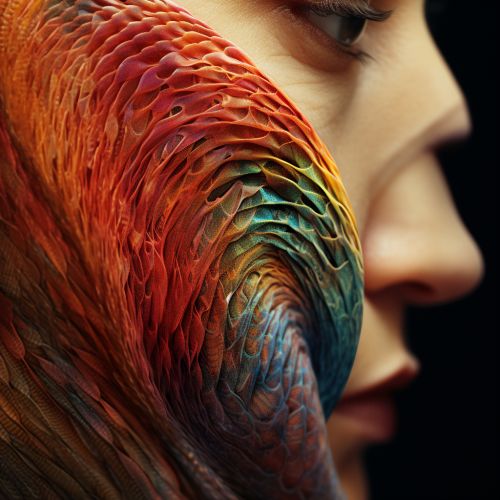Hearing
Anatomy of the Ear
The human ear is a complex organ that serves two main functions: hearing and balance. It is divided into three parts: the outer ear, the middle ear, and the inner ear more about the anatomy of the human ear.


The outer ear consists of the pinna (or auricle) and the ear canal. The pinna is the visible part of the ear that resides outside of the head, its primary function is to collect sound, and funnel it into the ear canal.
The middle ear starts with the eardrum (or tympanic membrane), a thin, cone-shaped membrane that separates the external ear from the middle ear. The middle ear also contains three tiny bones, known as ossicles, which are named the malleus (hammer), incus (anvil), and stapes (stirrup). These bones amplify and transmit the vibrations from the eardrum to the inner ear.
The inner ear, also known as the labyrinth, contains the cochlea, the vestibule, and the semicircular canals. The cochlea is responsible for converting the mechanical vibrations from the middle ear into electrical signals that the brain can interpret as sound. The vestibule and the semicircular canals are involved in maintaining balance.
The Process of Hearing
Hearing, or auditory perception, is the ability to perceive sound by detecting vibrations through an organ such as the ear. The process of hearing begins when sound waves enter the ear canal and reach the eardrum. The sound waves cause the eardrum to vibrate. These vibrations are then transferred to the three small bones of the middle ear, the ossicles. The ossicles amplify the vibrations and send them to the cochlea in the inner ear.
Inside the cochlea, the vibrations are converted into electrical signals by tiny hair cells. These signals are then transmitted to the brain via the auditory nerve. The brain interprets these signals as sound.
Hearing Loss and Disorders
Hearing loss can occur as a result of many factors, including: age, exposure to loud noise, certain medications, and certain illnesses. There are three types of hearing loss: conductive (caused by problems in the ear canal, eardrum, or middle ear), sensorineural (caused by problems in the inner ear), and mixed (a combination of conductive and sensorineural hearing loss).
In addition to hearing loss, there are other disorders related to the ear and hearing. These include tinnitus (a ringing or buzzing in the ears), Meniere's disease (a disorder of the inner ear that can affect hearing and balance), and otosclerosis (a condition that affects the movement of the stapes bone in the middle ear).
Prevention and Treatment of Hearing Loss
Prevention of hearing loss primarily involves protecting the ears from damage. This can be achieved by avoiding exposure to loud noises, or by wearing protective equipment such as earplugs or earmuffs when exposure cannot be avoided.
Treatment of hearing loss depends on the cause and severity of the condition. Options may include medication, surgery, or the use of hearing aids or cochlear implants. In some cases, particularly where hearing loss is caused by age or irreversible damage, treatment may focus on improving the individual's communication skills through lip reading or sign language.
